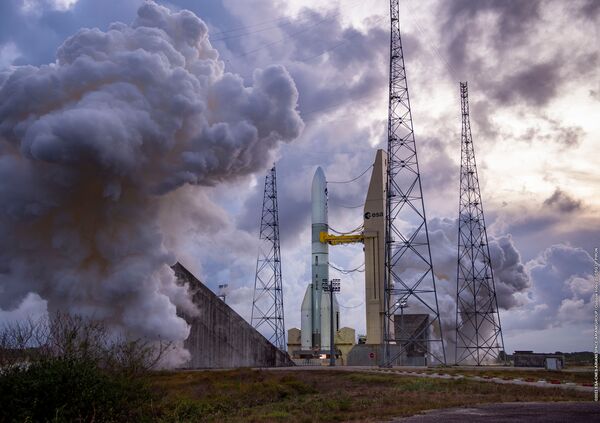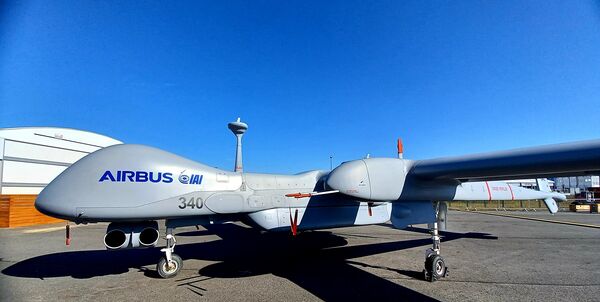- About
- Intara
- Capabilities
- Advisory
- Resources
- News
- Store
Pentagon unveils Microelectronics Commons hubs
22 September 2023
by Carlo Munoz


DARPA's Diverse Accessible Heterogeneous Integration effort is developing transistor-scale heterogeneous integration processes seeking to combine advanced compound semiconductor wafers with CMOS technology. Pictured here is a DAHI wafer. (Northrop Grumman)
The US Department of Defense (DoD) has officially announced the eight new research and development (R&D) hubs in the United States that will make up the department's new Microelectronics (ME) Commons.
The ME Commons initiative, funded through the Creating Helpful Incentives to Produce Semiconductors (CHIPS) Act of 2002, is designed to “get the most cutting-edge microchips into systems our troops use every day ... [while] reducing our reliance on foreign components, keeping us safe from the risks of supply chain disruption”, Deputy Defense Secretary Kathleen Hicks said during a 20 September briefing at the Pentagon.
Managed by the Strategic & Spectrum Missions Advanced Resilient Trusted Systems (S2MARTS), Other Transaction Authority (OTA), and Naval Surface Warfare Center (NSWC), the ME Commons will interconnect the series of regional R&D hubs focusing on different sectors of ME capability development.
UK seeks mobile launcher for tactical UAVs, possibly for Ukraine
03 May 2024
by Gareth Jennings


The Ukrainian Ukrspecsystems PD-1 is likely the UAV that the UK is now looking to launch from the back of a civilian-type trailer or flatbed pickup truck. (Ukrspecsystems)
The UK Ministry of Defence (MoD) is seeking to acquire a commercial off-the-shelf (COTS) portable solution for the launching of tactical unmanned aerial vehicles (UAVs) of varying configurations.
A request for information (RFI) issued on 2 May calls for a system that can launch a UAV with a maximum take-off weight (MTOW) of 40 kg from a civilian-type trailer or flatbed pickup truck.
As noted in the RFI, the solution should launch the UAV at a velocity of 25 m/s and an MTOW of 75 kg at 35 m/s; have a launch g
Ariane 6 to launch second-gen Galileo satellites from 2026
02 May 2024
by Olivia Savage


The Ariane 6 launcher will launch the first batch of G2G satellites in 2026 and 2027. Pictured is a successful long-duration hot-fire test of the rocket on its launch pad at Europe's Spaceport in French Guiana in September 2023. The rocket is in its final stages of testing before its inaugural flight in June 2024. (Arianegroup)
The new Ariane 6 rocket will launch the initial batch of Galileo Second Generation (G2G) navigation satellites into orbit in 2026 and 2027, Arianespace announced on 29 April.
A total of four G2G satellites will be sent into orbit on Ariane 6 over two separate launches in 2026 and 2027. Airbus Defence and Space and Thales Alenia Space are each building six satellites, which together form the first fleet of G2G satellites, the company detailed.
The G2G satellites will use electric propulsion and host a more powerful navigation antenna as well as improved atomic clocks and fully digital payloads compared with the first-generation Galileo satellites. Each spacecraft will weigh 2,000 kg, orbiting at an altitude of 23,222 km (medium Earth orbit).
Luftwaffe declares Heron TP ready for Germany-based operations
02 May 2024
by Gareth Jennings


Seen at the ILA 2024 Berlin Air Show, the Heron TP has now been cleared for global operations by the Luftwaffe. (Janes/Gareth Jennings)
The Luftwaffe has declared its leased Israel Aerospace Industries (IAI) Heron TP unmanned aircraft systems (UASs) to be ready for Germany-based operations worldwide, with flights to commence in mid-May.
The Luftwaffe announced the milestone on 2 May, saying that the airworthiness certificate for the UAS had been signed by the German Federal Aviation Office in Cologne on the same day. “The approval of our new reconnaissance drone is valid worldwide,” the service said, adding that flights will soon commence out of Jagel (also known as Schleswig Air Base) in the far north of the country.
The announcement follows the Heron TP being awarded a type certificate by the German Military Aviation Authority in late 2022, at which time it was operated out of an undisclosed location in Israel.
The Heron TP is intended to bridge the gap between the retirement of the earlier Heron 1 UAS and the introduction of the new European medium-altitude long-endurance UAS known as Eurodrone, with Airbus Defence and Space operating five air vehicles out to 2027.
The US Department of Defense (DoD) has officially announced the eight new research and development (...
Latest Podcasts
Using OSINT to support law enforcement
Ritu Gill, Intelligence Analyst, joins Harry and Sean to discuss the practical use of OSINT to support law enforcement. Ritu discusses it’s use in supporting risk assessments and classified or closed sources of intelligence. She also discusses t...
Listen nowJanes Case Studies
Using Janes Intara to build a common intelligence picture: Russian build up on the Ukrainian border
View Case StudyNews Categories
 C4ISR Details
C4ISR Details